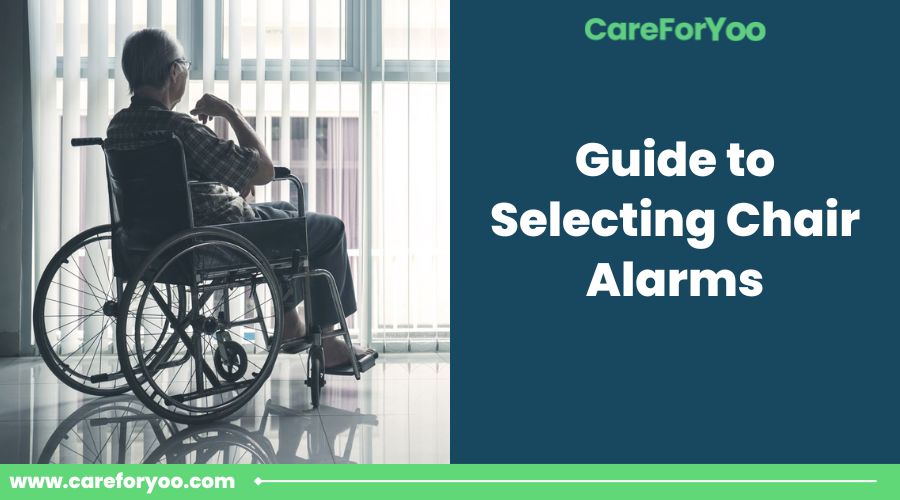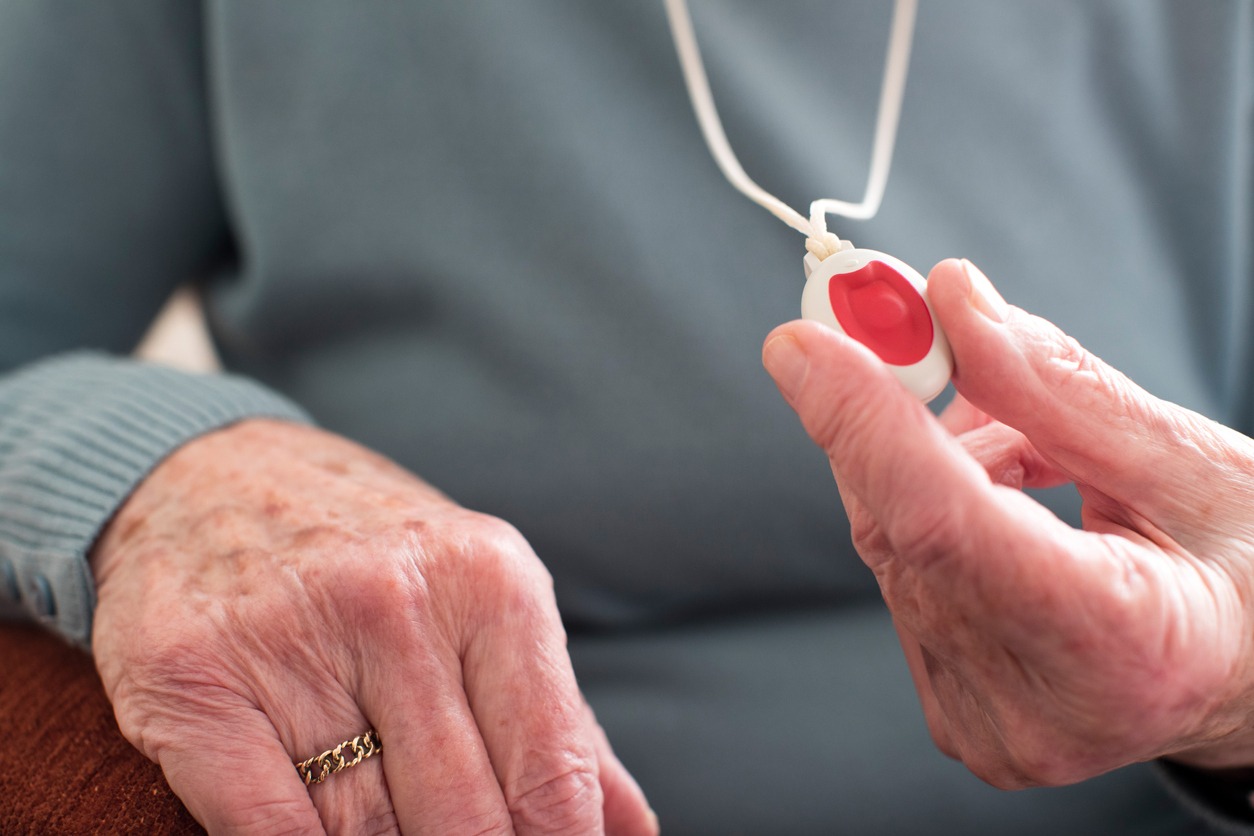Alarms are essential whenever a caregiver or a loved one is taking care of an elderly person with Alzheimer’s and dementia or someone that has special needs. The reason why alarms are important is that they will alert the caregiver if the senior or patient is making sudden movements like getting out of bed, leaving the bedroom, or going out of the house.
There are many types of alarms and alarm systems used at home and in nursing facilities, and one of the most commonly used types is the chair alarm. What is a chair alarm? And how do you pick which ones are the best to use for seniors or patients with Alzheimer’s, dementia, or special needs? Let us find out we dive into the guide to selecting chair alarms.
What is a Chair Alarm?
A chair alarm is a simple alert system that is placed on a chair or wheelchair and activates whenever the senior or patient gets out of the chair. The alarm is produced by the main device, which is usually installed on the back of the chair to keep it out of the reach of the patient. Most chair alarms today have volume control so that you can control how loud the alarm sound is produced by the device. In order for the chair alarm to work properly, you would need to put batteries inside it. Chair alarms typically run using different types of batteries, from the smaller AAA batteries to the bigger 9V batteries.
There are two types of chair alarms that you need to know about before purchasing. The first type is the pull string alarm, while the second type is the exit alarm. The pull string alarm is a type of alarm that activates whenever a pull string or cord attached to the alarm is suddenly pulled. In order for the pull string to be pulled, the end of the string has a clip that attaches to the clothing of the senior or patient. Then, the other end of the string has a magnet that attaches to the alarm.
On the other hand, the exit alarm is the type that is activated whenever the patient suddenly stands up from the chair or wheelchair. There is a sensor that is placed on the seat, and this sensor will detect if the patient has gotten out of the chair. The sensor is then connected with a cable or wirelessly to the alarm, which can be installed on the back of the chair or can be carried by the caregiver if the alarm and sensor are wireless.
It is up to you or the caregiver what type of chair alarm works best for the senior or patient, as each type would have its own strengths and weaknesses. While pull string alarms are very effective in producing an alarm if the patient has fallen out of or stood up from their chair or wheelchair, there will be times when the alarm sound isn’t loud enough for the caregiver to hear.
On the other hand, wireless exit alarms (that are used for both beds and chairs) produce sounds that can be heard by the caregiver (if he or she carries the alarm) but are not as effective in detecting movement on the chair or wheelchair and are prone to producing false alarms. So, the caregiver should pick the alarm that he or she thinks has pros that outweigh its cons. [1]
How to Set Up a Chair Alarm
A chair alarm is relatively easy to set up as long as you follow the steps required to install it properly on a chair or wheelchair. All of the most popular chair alarms today are battery-powered, so you don’t have to worry about plugging the alarm into an electrical outlet. To know more about installing an alarm system on a chair or wheelchair, here are the steps for setting up a chair alarm.
- Place the correct batteries inside the chair alarm’s battery compartment. This compartment is located at the back of the alarm, so it will remain hidden from the senior or patient.
- The chair alarm typically has a hook at its back that can be hooked on the backrest of the chair or wheelchair. Hook the chair alarm security on the backrest so that it wouldn’t move or fall out of the chair.
- Turn on the alarm through the power switch, which is located to the side or on the front of the chair alarm.
- Check the alarm to see if it works properly by testing the pull string or the seat sensor. You can test out these items by pulling on the string or sitting on the seat sensor and getting up.
- If the sound that the alarm produces is too loud or too quiet, you can adjust the volume of the alarm using the volume buttons or the volume switch at the front or on the side of the chair alarm. Take note that there are some chair alarms that don’t have volume control.
- Once you have set the volume and tested the alarm, you can then let the senior or patient sit on the chair or wheelchair. If the alarm has a pull string, you would need to clip the pull string on the shirt or pants of the patient. Be sure that the location of the clip is placed in an area that wouldn’t hurt the patient.
In order to prevent the chair alarm from failing, you should check and test it at least once a day and see if the alarm is still working properly. Most of the time, chair alarms fail due to depleted batteries, so it is also essential to check the batteries and make sure that it still has enough juice to power the chair alarms. Fortunately, checking for battery life is very easy today, as a lot of chair alarms have a low battery indicator.
How to Select the Best Chair Alarms
Because there are already hundreds of different chair alarms on the market, it can be hard for a lot of caregivers and loved ones of seniors or patients with special needs to find the best and most suitable chair alarms. But there are certain tips that you can follow in order to make it easier for you to pick the alarm system for chairs and wheelchairs. Here are tips on selecting the best chair alarms.
Check the Batteries Needed for the Chair Alarm First
For you to know if the batteries for the chair alarm can easily be replaced, you would need to check the type of battery that provides power to the alarm. There are a few chair alarms today that are powered using AAA or AA batteries, which are cylindrical in shape, but there are a lot of chair alarms that use 9V batteries (rectangular batteries) as their source of power.
However, keep in mind that there are also alarms that use rare or hard-to-find batteries, and you should stay away from these alarms since you will have difficulties once you have to change the battery of the alarm. So, stick to the AAA, AA, and 9V-powered alarms for easier battery replacements.
Always Check for Reviews Online
Finding the best chair alarms is very easy when you read or watch reviews online. Reviews are available to be read or watched through review websites, blogs, video streaming apps, and even on online shops where you can buy different chair alarms. Through these reviews, you will be able to know about the various details of each chair alarm, and you will also have an idea of the pros and cons of the reviewed alarm.
Another benefit that you can get from reviews is that they save you a lot of time and effort finding the best chair alarms, as reading or watching reviews can only take you a few minutes while checking out each chair alarm one by one in physical stores can usually take about an hour. Check out reviews first so that you will have a faster time finding the most suitable chair alarm for your patient.
Here are a few chair alarms that have good reviews for you to check out:
- Secure Safety Solutions MAG-5 Pull Cord Alarm – a pull string alarm that features an adjustable cord that can be shortened to 28 inches and lengthened to 58 inches. Furthermore, the alarm has a holder with an attachment strap so that you can easily place the alarm back in the chair or wheelchair after replacing its batteries.
- Smart Caregiver Cordless Bed and Chair Exit System – one of the most popular exit alarms with two sensors that can be used for one bed and one chair or wheelchair. Both of the sensors connect wirelessly to the alarm console, which produces an alarm sound that can be set to low, medium, and high volumes.
- Secure Safety Solutions Chair and Bed Alarm – another product from Secure Safety Solutions that features a magnet pull cord that has an alligator clip at its end. This alarm has three volume levels and two alert tones that produce an alarm sound if the magnet pull cord is detached or if the battery of the alarm is low.
- Drive Medical Tamper Proof Magnetic Pull Cord Alarm – this pull string alarm is powered by a 9V battery and has a low battery indicator for you to easily know when it is time to replace the battery. The alarm also has low and high volume controls so that you can customize how loud the alarm sound will be produced by the device.
- Lunderg Chair Alarm System – an exit alarm that is specifically designed for chairs, but there is also the Lunderg Early Alert Bed Alarm System that can be used for beds since it has a bigger sensor. The Lunderg Chair Alarm System has a seat sensor that is compatible with a lot of chairs, sofas, and wheelchairs, and it is also connected wirelessly to the alarm, which can be paired with up to three sensors.
We hope that this basic guide has helped you in having a better understanding of how chair alarms work and what chair alarms to get once you are ready to use them for an elderly loved one or a patient with Alzheimer’s, dementia, or special needs. Check reviews, as well as lists and rankings of the best chair alarms, so that you can easily find the most durable and reliable chair alarm to use.
References
[1] Kerr Medical Blog. (2019, July 15). Using Bed Alarms with Elderly and Dementia Patients. Kerr Medical. Retrieved January 9, 2023, from https://kerrmedical.com/blogs/bed-alarms/using-bed-alarms-with-elderly-and-dementia-patients





